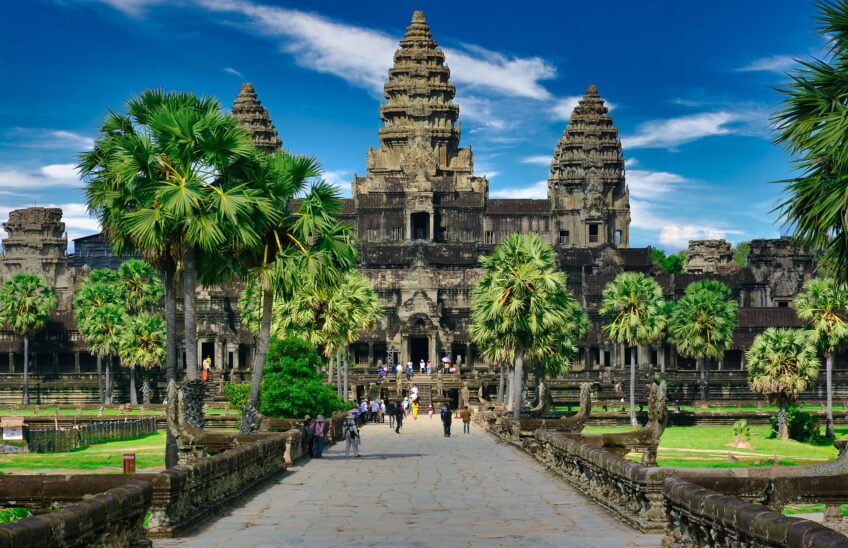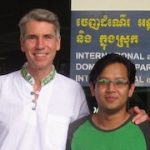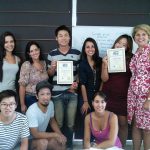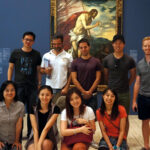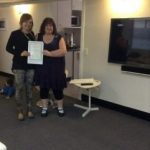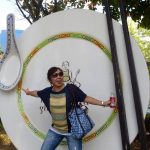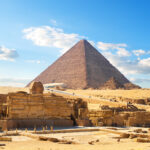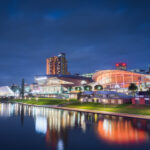Teach English in Cambodia
Teaching English in Cambodia presents a unique opportunity to engage with the country’s remarkable highlights and contribute to its ongoing development. Cambodia’s rich cultural tapestry, adorned with ancient temples like Angkor Wat and bustling markets, provides an inspiring backdrop for educators. By sharing the gift of English, teachers become catalysts for change, enabling Cambodians to connect with the world and access global opportunities. This linguistic empowerment not only opens doors for students in various industries but also fosters cross-cultural understanding as teachers bring diverse perspectives to the vibrant classrooms.
Moreover, the experience to teach English in Cambodia offers teachers a chance to immerse themselves in the warmth of the local community, gaining a deeper appreciation for the country’s history and traditions. In essence, teaching ESL in Cambodia is not just about language education; it’s a journey that unfolds amidst the captivating beauty and resilience of this Southeast Asian gem.
Popular Cities

Phnom Penh:
As the capital and largest city of Cambodia, Phnom Penh is a popular destination for English teachers. The city is a vibrant mix of traditional Khmer culture and modern development, offering a diverse range of teaching opportunities. Many language schools, international schools, and NGOs in Phnom Penh seek English teachers, and the city’s lively atmosphere provides a rich cultural experience for educators.
Royal Palace and Silver Pagoda: Explore the opulent grounds of the Royal Palace, a symbol of Cambodia’s grandeur, and visit the Silver Pagoda, adorned with thousands of silver tiles and precious gems.
Tuol Sleng Genocide Museum (S-21): Gain insight into Cambodia’s tragic history at the Tuol Sleng Museum, a former prison during the Khmer Rouge regime, and pay homage to the victims of this dark period.
Central Market (Phsar Thmei): Immerse yourself in the vibrant atmosphere of Phnom Penh’s Central Market, where you can shop for local crafts, jewelry, and fresh produce.
Riverside Promenade: Stroll along the Tonle Sap River’s scenic promenade, lined with cafes and restaurants, offering a relaxing escape from the city’s hustle and bustle.
National Museum of Cambodia: Discover Cambodia’s rich cultural heritage at the National Museum, home to a vast collection of Khmer art and artifacts, providing a captivating journey through the country’s past.
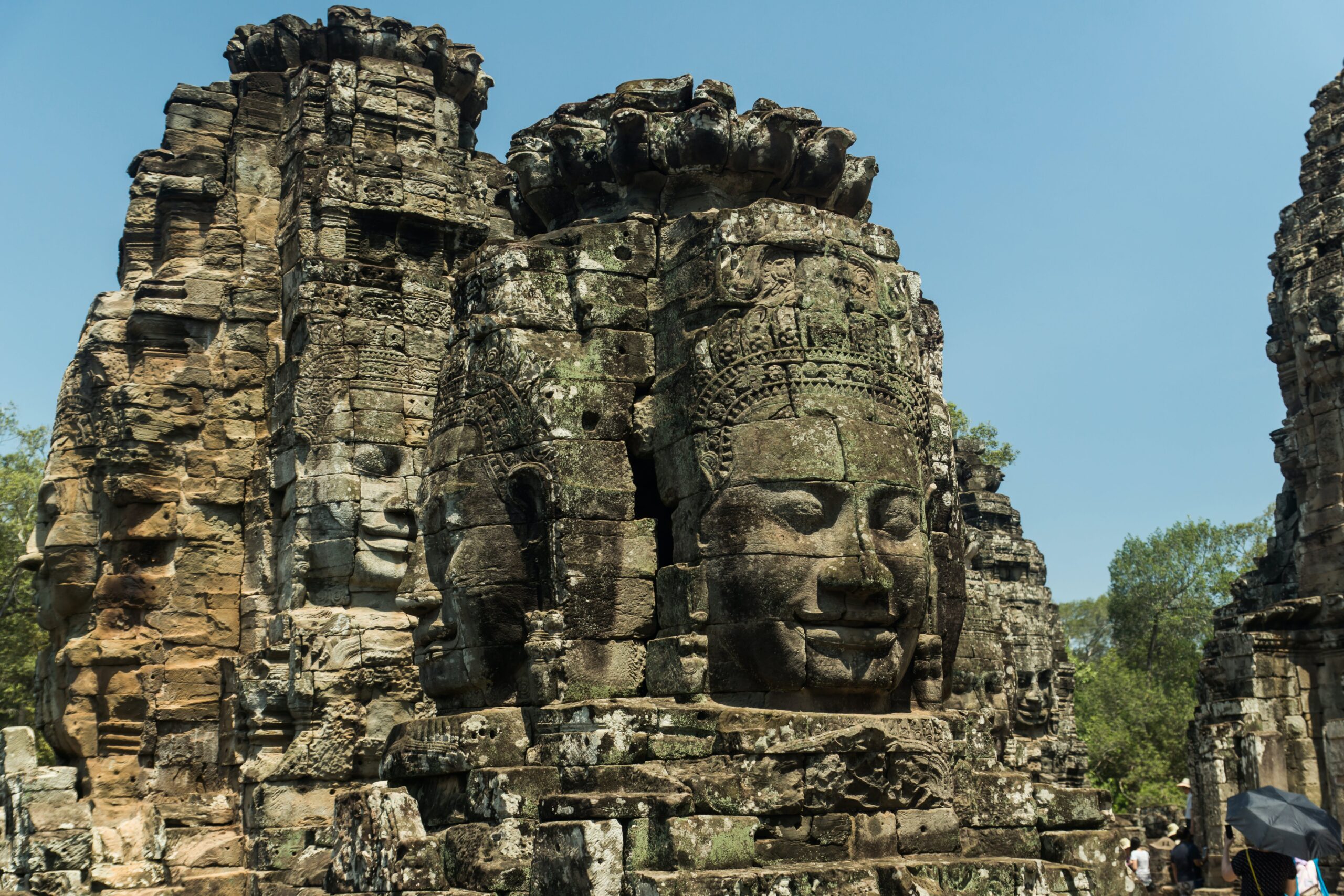
Siem Reap:
Known for the awe-inspiring Angkor Wat temple complex, Siem Reap is a major tourist destination and an emerging hub for English language education. The demand for English teachers in Siem Reap is fueled by the growing tourism industry, as locals recognize the importance of English for engaging with international visitors. Teaching in Siem Reap provides a unique opportunity to explore Cambodia’s historical treasures while contributing to the educational development of the local community.
Angkor Wat and Angkor Archaeological Park: Marvel at the world-famous Angkor Wat, a UNESCO World Heritage site, and explore the extensive Angkor Archaeological Park, home to ancient temples like Bayon and Ta Prohm.
Pub Street: Experience the lively atmosphere of Pub Street, Siem Reap’s entertainment hub, offering a mix of restaurants, bars, and night markets, creating a vibrant nightlife scene.
Tonle Sap Lake: Take a boat trip to Tonle Sap, the largest freshwater lake in Southeast Asia, to witness floating villages and gain insights into the unique way of life along the water.
Cambodian Landmine Museum and Relief Center: Learn about the impact of landmines in Cambodia and support a noble cause at the Landmine Museum, which focuses on landmine awareness and the rehabilitation of affected children.
Phare, The Cambodian Circus: Enjoy a captivating performance at Phare, a contemporary circus that showcases Cambodian culture through high-energy acrobatics, music, and storytelling.
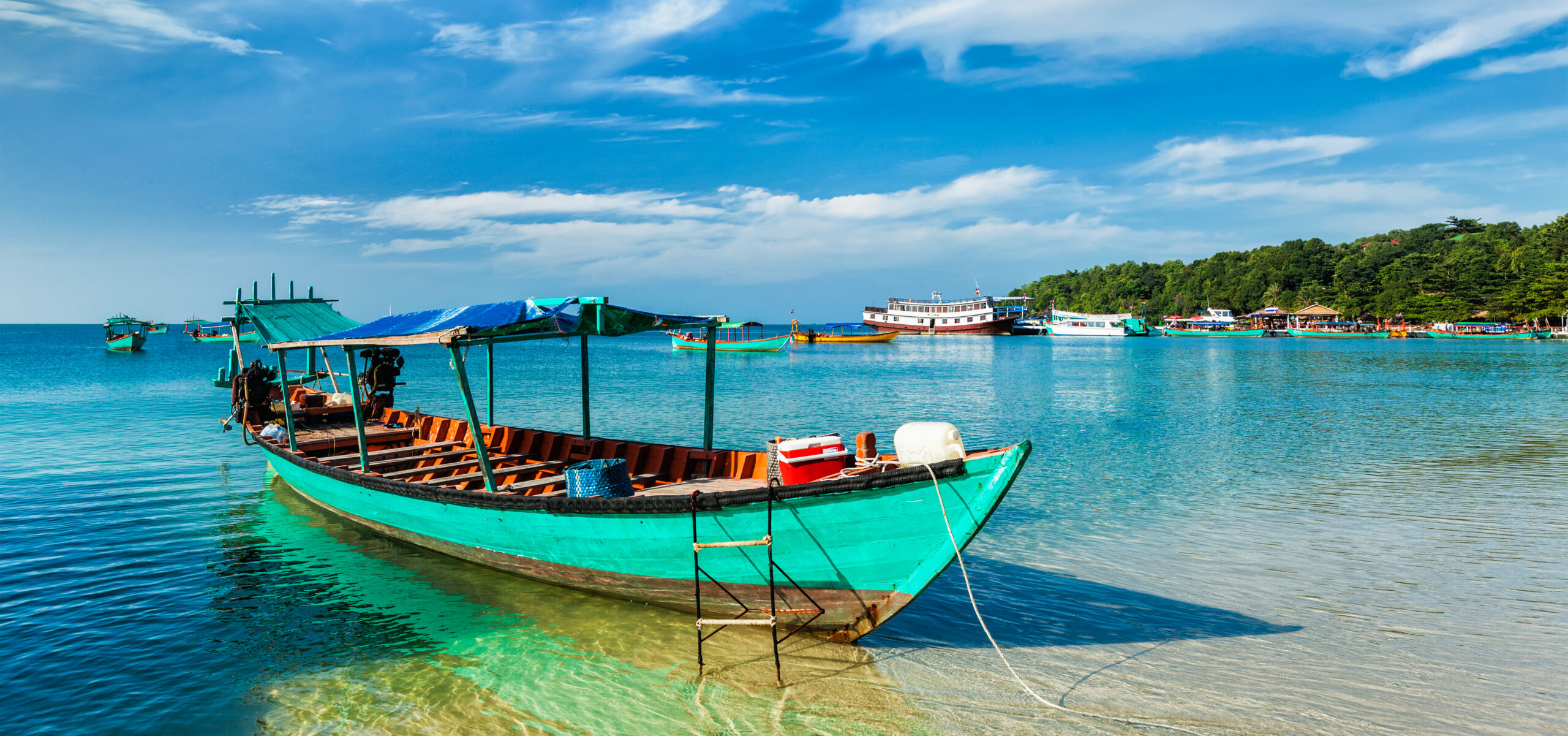
Sihanoukville (Preah Sihanouk):
Nestled along the Gulf of Thailand, Sihanoukville has been a popular coastal destination, drawing both tourists and expatriates. The city’s expanding economy and international presence have led to an increased demand for English teachers. Teaching in Sihanoukville allows educators to enjoy the coastal lifestyle while making a meaningful impact on the language skills of the local population.
Ochheuteal Beach: Relax on the sandy shores of Ochheuteal Beach, known for its clear waters, water sports, and beachside cafes offering fresh seafood.
Koh Rong Island: Embark on a boat trip to Koh Rong, a nearby island known for its pristine beaches, vibrant coral reefs, and opportunities for snorkeling and diving.
Ream National Park: Explore the diverse ecosystems of Ream National Park, home to mangrove forests, wildlife, and secluded beaches, offering a tranquil escape from the city.
Sokha Beach: Visit Sokha Beach for a more serene coastal experience, featuring clean sands and crystal-clear waters, perfect for swimming and relaxation.
Wat Leu: Discover the cultural heritage of Sihanoukville at Wat Leu, a hilltop temple providing panoramic views of the city and the Gulf of Thailand, blending spirituality with breathtaking scenery.
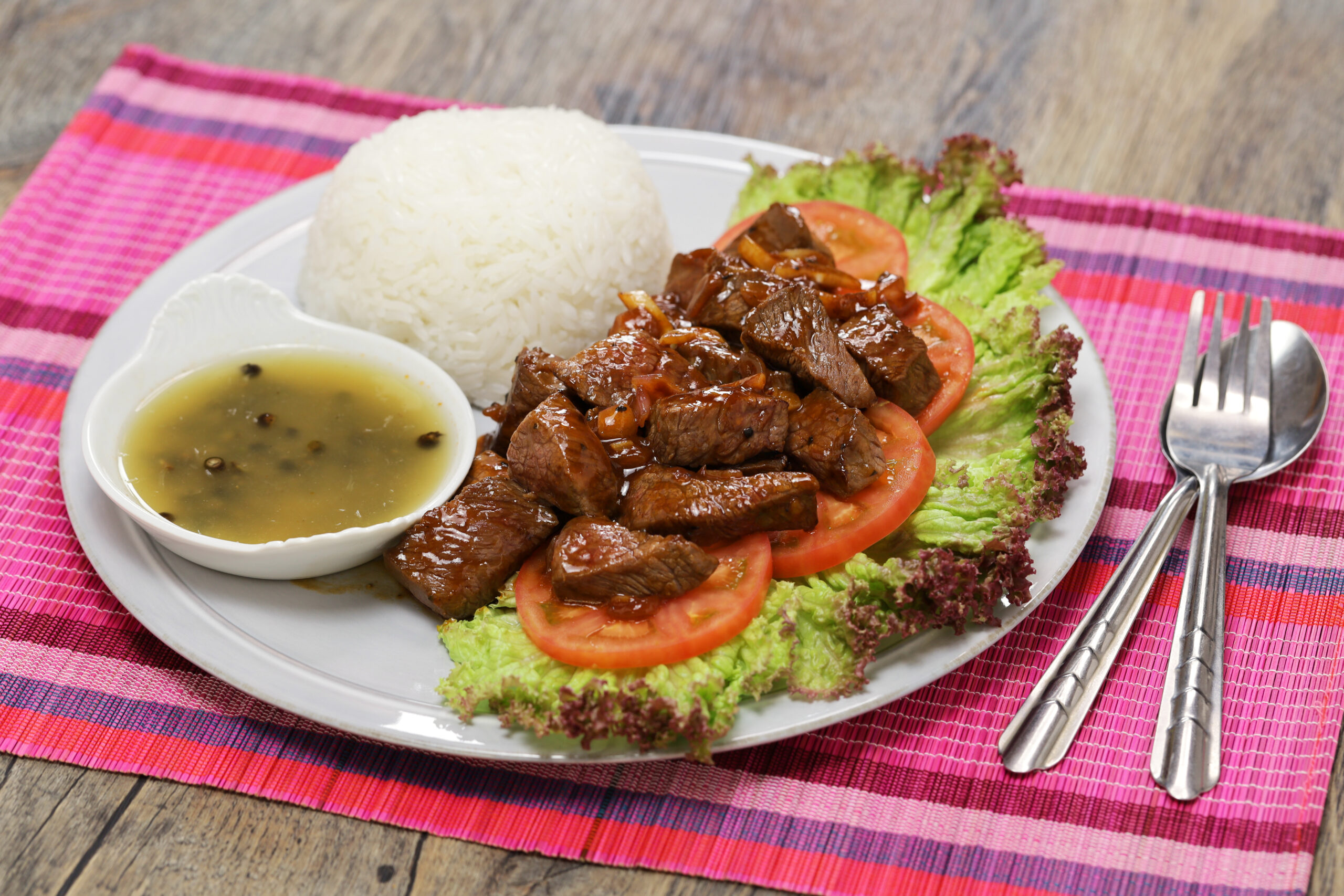
Food
Cambodian cuisine is a delightful fusion of flavors, drawing influences from its Southeast Asian neighbors while maintaining a unique identity. Rice, fish, and an abundance of aromatic herbs and spices are key components of Cambodian dishes. Here are five must-try Cambodian foods:
Lok Lak: Lok Lak is a popular Khmer stir-fry dish, typically made with marinated beef or other meats, stir-fried with garlic, onions, and tomatoes. The dish is often served with a side of fresh vegetables and a tangy dipping sauce.
Amok (Fish Amok): Amok is a quintessential Cambodian dish, featuring a savory fish curry that is steam-cooked in banana leaves. The creamy coconut milk base is infused with aromatic herbs, such as lemongrass and galangal, creating a harmonious blend of flavors.
Bai Sach Chrouk (Pork and Rice): A traditional breakfast dish, Bai Sach Chrouk consists of thinly sliced and grilled pork served over fragrant rice. It’s commonly accompanied by pickled vegetables and a side of clear pork broth, creating a satisfying and flavorful morning meal.
Num Banh Chok: Num Banh Chok is a beloved Cambodian breakfast dish featuring rice noodles topped with a fish-based green curry gravy. It’s often garnished with an array of fresh herbs, bean sprouts, and banana flower, creating a refreshing and aromatic dish.
Khmer Red Curry (Samlor Kako): Khmer Red Curry is a hearty stew made with meat (often beef or chicken), vegetables, and a flavorful blend of red curry paste, lemongrass, and coconut milk. This comforting and aromatic curry is typically served with rice, offering a delicious taste of Cambodian comfort food.
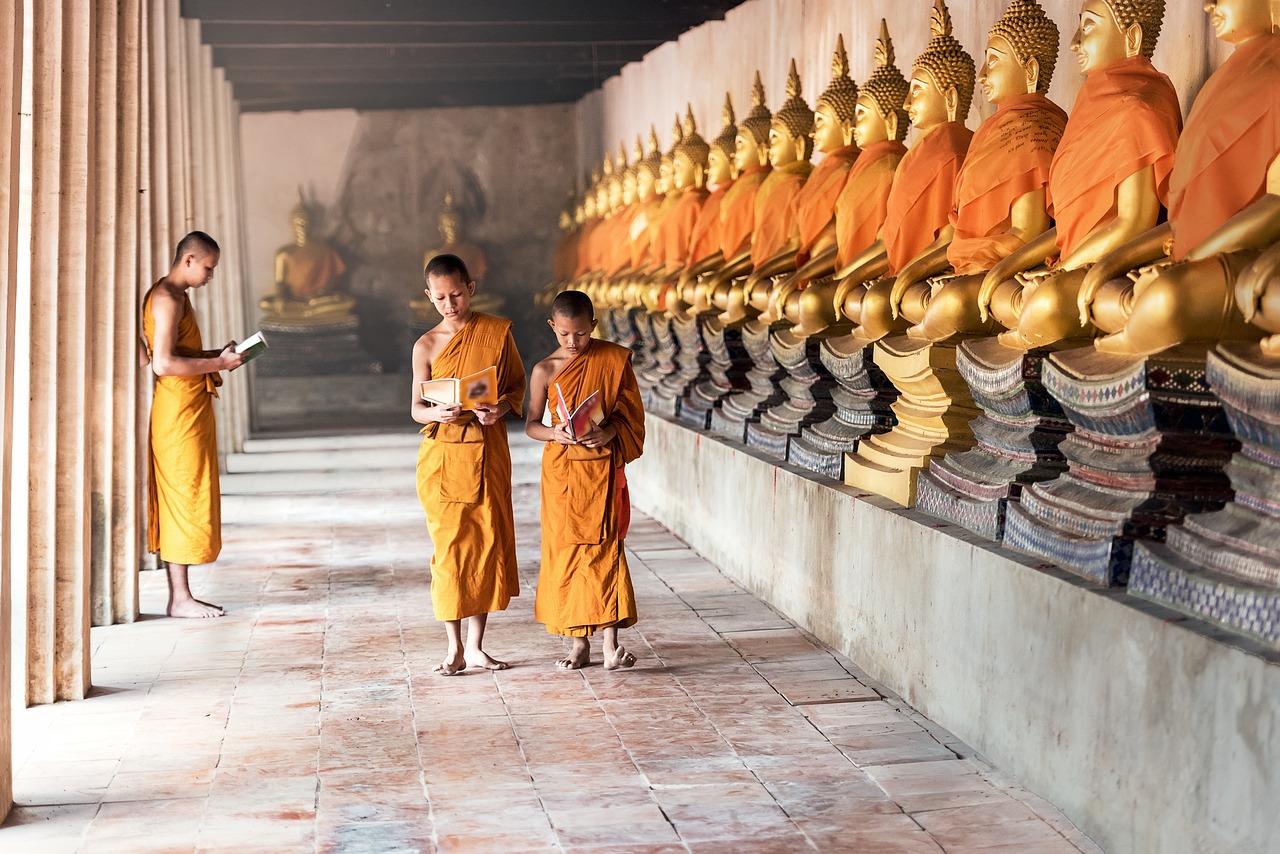
Culture and People
Cambodian culture is deeply rooted in a rich history that has endured both ancient glories and challenging periods. The people of Cambodia, known as Khmers, have a resilient spirit that is reflected in their traditions, customs, and daily life. Here are five specific aspects of Cambodian culture and its people:
Khmer Buddhism: Buddhism is a cornerstone of Cambodian culture, and the majority of the population practices Theravada Buddhism. Monasteries, pagodas, and religious ceremonies play a significant role in daily life. The respect for monks and the influence of Buddhist teachings are evident in various aspects of Cambodian culture, from art and architecture to social norms.
Angkor Wat and Temples: The ancient city of Angkor was the seat of the Khmer Empire, and its temples, including the iconic Angkor Wat, stand as testimony to Cambodia’s glorious past. These architectural marvels not only attract tourists but also symbolize the cultural and spiritual heritage of the Khmer people. Angkor Wat, in particular, is a symbol of national pride and is featured on the Cambodian flag.
Traditional Dance and Arts: Cambodian traditional dance, often performed at religious and cultural events, is a captivating art form characterized by elaborate costumes and precise, graceful movements. The Apsara dance, in particular, is a classical dance that narrates stories from Hindu mythology. Traditional arts, including silk weaving and stone carving, also contribute to Cambodia’s cultural identity.
Khmer New Year (Choul Chnam Thmey): Khmer New Year, celebrated in April, is a significant cultural event marked by elaborate festivities. Families come together to pay respects to ancestors, enjoy traditional foods, and participate in games and dances. The celebration reflects the importance of family and community bonds in Cambodian culture.
Resilience and Warmth of the People: Despite the challenges Cambodia has faced, including the Khmer Rouge era, the Khmer people are known for their resilience and warmth. Visitors often remark on the genuine hospitality and friendliness of the Cambodian people. This collective spirit has played a crucial role in the country’s recovery and rebuilding process.
Qualifications
An internationally recognised TESOL Certificate will be required to teach English in Cambodia.
Visa
To work as an English teacher in Cambodia, you will need to have a valid work visa. Most schools will help you obtain the correct visa and guide you through the process with visa assistance. Some students will originally enter on a 3-month holiday visa. The process of obtaining a work visa can vary depending on your country of origin, but generally, you will need to provide proof of your qualifications, a valid passport, and a criminal background check. It is important to check the specific requirements for each country and your language school for up-to-date advice.

Start Your Journey!
The transformative and rewarding experience to teach English in Cambodia offers teachers a unique blend of cultural immersion, historical exploration, and the chance to make a meaningful impact on the lives of students. With its rich heritage, stunning landscapes, and resilient people, Cambodia provides a captivating backdrop for teaching. Whether it’s the ancient wonders of Angkor Wat, the vibrant markets of Phnom Penh, or the serene coastal beauty of Sihanoukville, the country offers diverse experiences.
Beyond the tangible attractions, the warmth and hospitality of the Cambodian people create a welcoming environment for teachers. Teaching English in Cambodia not only opens doors for local learners to global opportunities but also allows educators to contribute to the educational development of a nation rebuilding its future. It’s a journey that combines professional growth with cultural immersion, making Cambodia an enriching destination for those seeking a fulfilling and impactful teaching experience.


